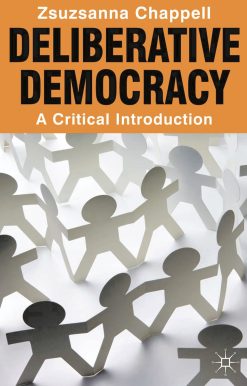Sapiens: A Brief History of Humankind
23.00 JOD
Please allow 2 – 5 weeks for delivery of this item
Description
NATIONAL BESTSELLERNEW YORK TIMES BESTSELLERDestined to become a modern classic in the vein of Guns, Germs, and Steel, Sapiens is a lively, groundbreaking history of humankind told from a unique perspective. 100,000 years ago, at least six species of human inhabited the earth. Today there is just one. Us. Homo Sapiens. How did our species succeed in the battle for dominance? Why did our foraging ancestors come together to create cities and kingdoms? How did we come to believe in gods, nations, and human rights; to trust money, books, and laws; and to be enslaved by bureaucracy, timetables, and consumerism? And what will our world be like in the millennia to come? In Sapiens, Dr. Yuval Noah Harari spans the whole of human history, from the very first humans to walk the earth to the radical — and sometimes devastating — breakthroughs of the Cognitive, Agricultural, and Scientific Revolutions. Drawing on insights from biology, anthropology, palaeontology, and economics, he explores how the currents of history have shaped our human societies, the animals and plants around us, and even our personalities. Have we become happier as history has unfolded? Can we ever free our behaviour from the heritage of our ancestors? And what, if anything, can we do to influence the course of the centuries to come? Bold, wide-ranging and provocative, Sapiens challenges everything we thought we knew about being human: our thoughts, our actions, our power…and our future.
Additional information
| Weight | 0.60 kg |
|---|---|
| Dimensions | 3.63 × 15.14 × 4.09 cm |
| by | |
| Format | Paperback |
| Language | |
| Pages | 512 |
| Publisher | |
| Year Published | 2016-5-10 |
| Imprint | |
| Publication City/Country | Canada |
| ISBN 10 | 0771038518 |
| About The Author | Professor YUVAL NOAH HARARI is a historian, philosopher, and the bestselling author of Sapiens: A Brief History of Humankind, Homo Deus: A Brief History of Tomorrow, and 21 Lessons for the 21st Century, which have sold over 35 million copies worldwide, and been translated into 65 languages. Born in Haifa, Israel in 1976, Harari received his Ph.D. from the University of Oxford in 2002, and is currently a lecturer at the Department of History, the Hebrew University of Jerusalem. Harari lectures around the world on the topics explored in his books and articles and has written for publications such as The Guardian, Financial Times, New York Times, The Times, The Economist, and Nature magazine. He also offers his knowledge and time to various organizations and audiences on a voluntary basis. |
"Here is a simple reason why Sapiens has risen explosively to the ranks of an international best-seller. It tackles the biggest questions of history and of the modern world, and it is written in unforgettably vivid language. You will love it!"—Jared Diamond, Pulitzer Prize-winning author of Guns, Germs, and Steel, Collapse, and The World until Yesterday"I have just read Yuval Noah Harari's book Sapiens. It is brilliant. Most likely the best – and I have read very many – on the history of humankind. I have never read anything better. I think it is sad to think of all the people that will not get to read it."—Henning Mankell"Sapiens is the sort of book that sweeps the cobwebs out of your brain. Its author, Yuval Noah Harari, is a young Israeli academic and an intellectual acrobat whose logical leaps have you gasping with admiration . . . Harari's writing radiates power and clarity." —The Sunday Times"Sapiens is packed with heretical thinking and surprising facts. This riveting, myth-busting book cannot be summarised in any detail; you will simply have to read it." —Financial Times"Sapiens is a starburst of a book, as enjoyable as it is stimulating." —Sunday Express "Sapiens is a fast-paced, witty and challenging romp through 70,000 years of human history . . . I did love it, and if you are interested in the whole story of humankind, I'm confident that you will love it too." —Literary Review "Not only is Harari eloquent and humane, he is often wonderfully, mordantly funny. . . . Sapiens is a brave and bracing look at a species that is mostly in denial about . . . the crossroads it is rapidly approaching."—The Independent |
|
| Excerpt From Book | Our Brothers' KeepersDespite the benefits of fire, 150,000 years ago humans were still marginal creatures. They could now scare away lions, warm themselves during cold nights, and burn down the occasional forest. Yet counting all species together, there were still no more than perhaps a million humans living between the Indonesian archipelago and the Iberian peninsula, a mere blip on the ecological radar.Our own species, Homo sapiens, was already present on the world stage, but so far it was just minding its own business in a corner of Africa. We don’t know exactly where and when animals that can be classified as Homo sapiens first evolved from some earlier type of humans, but most scientists agree that by 150,000 years ago, East Africa was populated by Sapiens that looked just like us. If one of them turned up in a modern morgue, the local pathologist would notice nothing peculiar. Thanks to the blessings of fire, they had smaller teeth and jaws than their ancestors, whereas they had massive brains, equal in size to ours.Scientists also agree that about 70,000 years ago, Sapiens from East Africa spread into the Arabian peninsula, and from there they quickly overran the entire Eurasian landmass.When Homo sapiens landed in Arabia, most of Eurasia was already settled by other humans. What happened to them? Thereare two conflicting theories. The ‘Interbreeding Theory’ tells a story of attraction, sex and mingling. As the African immigrants spread around the world, they bred with other human populations, and people today are the outcome of this interbreeding.For example, when Sapiens reached the Middle East and Europe, they encountered the Neanderthals. These humans were more muscular than Sapiens, had larger brains, and were better adapted to cold climes. They used tools and fire, were good hunters, and apparently took care of their sick and infirm. (Archaeologists have discovered the bones of Neanderthals who lived for many years with severe physical handicaps, evidence that they were cared for by their relatives.) Neanderthals are often depicted in caricatures as the archetypical brutish and stupid ‘cave people’, but recent evidence has changed their image.According to the Interbreeding Theory, when Sapiens spread into Neanderthal lands, Sapiens bred with Neanderthals until the two populations merged. If this is the case, then today’s Eurasians arenot pure Sapiens. They are a mixture of Sapiens and Neanderthals. Similarly, when Sapiens reached East Asia, they interbred with the local Erectus, so the Chinese and Koreans are a mixture of Sapiens and Erectus.The opposing view, called the ‘Replacement Theory’ tells a very different story – one of incompatibility, revulsion, and perhaps even genocide. According to this theory, Sapiens and other humans had different anatomies, and most likely different mating habits and even body odours. They would have had little sexual interest in one another. And even if a Neanderthal Romeo and a Sapiens Juliet fell in love, they could not produce fertile children, because the genetic gulf separating the two populations was already unbridgeable. The two populations remained completely distinct, and when the Neanderthals died out, or were killed off, their genes died with them. According to this view, Sapiens replaced all of the previous human populations without merging with them. If that is the case, the lineages of all contemporary humans can be traced back, exclusively, to East Africa, 70,000 years ago. We are all 'pure Sapiens'.A lot hinges on this debate. From an evolutionary perspective, 70,000 years is a relatively short interval. If the Replacement Theory is correct, all living humans have roughly the same genetic baggage, and racial distinctions among them are negligible. But if the Interbreeding Theory is right, there might well be genetic differences between Africans, Europeans and Asians that go back hundreds of thousands of years. This is political dynamite, which could provide material for explosive racial theories. In recent decades the Replacement Theory has been the common wisdom in the field. It had firmer archaeological backing, and was more politically correct (scientists had no desire to open up the Pandora's box of racism by claiming significant genetic diversity among modern human populations). But that ended in 2010 when the results of a four-year effort to map the Neanderthal genome were published. Geneticists were able to collect enough intact Neanderthal DNA from fossils to make a broad comparison between it and the DNA of contemporary humans. The results stunned the scientific community. It turned out that 1–4 per cent of the unique human DNA of modern populations in the Middle East and Europe is Neanderthal DNA. That’s not a huge amount, but it’s significant. A second shock came several months later, when DNA extracted from the fossilised finger from Denisova was mapped. The results proved that up to 6 per cent of the unique human DNA of modern Melanesians and Aboriginal Australians is Denisovan DNA.If these results are valid – and it’s important to keep in mind that further research is under way and may either reinforce or modify these conclusions – the Interbreeders got at least some things right. But that doesn’t mean that the Replacement Theory is completely wrong. Since Neanderthals and Denisovans contributed only a small amount of DNA to our present-day genome, it is impossible to speak of a ‘merger’ between Sapiens and other human species. Although differences between them were not large enough to completely prevent fertile intercourse, they were sufficient to make such contacts very rare.How then should we understand the biological relatedness of Sapiens, Neanderthals and Denisovans? Clearly, they were not completely different species like horses and donkeys. On the other hand, they were not just different populations of the same species, like bulldogs and spaniels. Biological reality is not black and white. There are also important grey areas. Every two species that evolved from a common ancestor, such as horses and donkeys, were at one time just two populations of the same species, like bulldogs and spaniels. There must have been a point when the two populations were already quite different from one another, but still capable on rare occasions of having sex and producing fertile offspring. Then another mutation severed this last connecting thread, and they went their separate evolutionary ways.It seems that about 50,000 years ago, Sapiens, Neanderthals and Denisovans were at that borderline point. They were almost, but not quite, entirely separate species. As we shall see in the next chapter, Sapiens were already very different from Neanderthals and Denisovans not only in their genetic code and physical traits, but also in their cognitive and social abilities, yet it appears it was still just possible, on rare occasions, for a Sapiens and a Neanderthal to produce a fertile offspring. So the populations did not merge, but a few lucky Neanderthal genes did hitch a ride on the Sapiens Express. It is unsettling – and perhaps thrilling – to think that we Sapiens could at one time have sex with an animal from a different species, and produce children together.But if the Neanderthals, Denisovans and other human species didn’t merge with Sapiens, why did they vanish? One possibility is that Homo sapiens drove them to extinction. Imagine a Sapiens band reaching a Balkan valley where Neanderthals had lived for hundreds of thousands of years. The newcomers began to hunt the deer and gather the nuts and berries that were the Neanderthals’ traditional staples. Sapiens were more proficient hunters and gatherers – thanks to better technology and superior social skills – so they multiplied and spread. The less resourceful Neanderthals found it increasingly difficult to feed themselves. Their population dwindled and they slowly died out, except perhaps for one or two members who joined their Sapiens neighbours.Another possibility is that competition for resources flared up into violence and genocide. Tolerance is not a Sapiens trademark. In modern times, a small difference in skin colour, dialect or religion has been enough to prompt one group of Sapiens to set about exterminating another group. Would ancient Sapiens have been more tolerant towards an entirely different human species? It may well be that when Sapiens encountered Neanderthals, the result was the first and most significant ethnic-cleansing campaign in history.Whichever way it happened, the Neanderthals (and the other human species) pose one of history’s great what ifs. Imagine how things might have turned out had the Neanderthals or Denisovans survived alongside Homo sapiens. What kind of cultures, societies and political structures would have emerged in a world where several different human species coexisted? How, for example, would religious faiths have unfolded? Would the book of Genesis have declared that Neanderthals descend from Adam and Eve, would Jesus have died for the sins of the Denisovans, and would the Qur’an have reserved seats in heaven for all righteous humans, whatever their species? Would Neanderthals have been able to serve in the Roman legions, or in the sprawling bureaucracy of imperial China? Would the American Declaration of Independence hold as a self-evident truth that all members of the genus Homo are created equal? Would Karl Marx have urged workers of all species to unite?Over the past 10,000 years, Homo sapiens has grown so accustomed to being the only human species that it’s hard for us to conceive of any other possibility. Our lack of brothers and sisters makes it easier to imagine that we are the epitome of creation, and that a chasm separates us from the rest of the animal kingdom. When Charles Darwin indicated that Homo sapiens was just another kind of animal, people were outraged. Even today many refuse to believe it. Had the Neanderthals survived, would we still imagine ourselves to be a creature apart? Perhaps this is exactly why our ancestors wiped out the Neanderthals. They were too familiar to ignore, but too different to tolerate.Whether Sapiens are to blame or not, no sooner had they arrived at a new location than the native population became extinct. The last remains of Homo soloensis are dated to about 50,000 years ago. Homo denisova disappeared shortly thereafter. Neanderthals made their exit roughly 30,000 years ago. The last dwarf-like humans vanished from Flores Island about 12,000 years ago. They left behind some bones, stone tools, a few genes in our DNA and a lot of unanswered questions. They also left behind us, Homo sapiens, the last human species.What was the Sapiens’ secret of success? How did we manage to settle so rapidly in so many distant and ecologically different habitats? How did we push all other human species into oblivion? Why couldn’t even the strong, brainy, cold-proof Neanderthals survive our onslaught? The debate continues to rage. The most likely answer is the very thing that makes the debate possible: Homo sapiens conquered the world thanks above all to its unique language. |
Only logged in customers who have purchased this product may leave a review.






Reviews
There are no reviews yet.